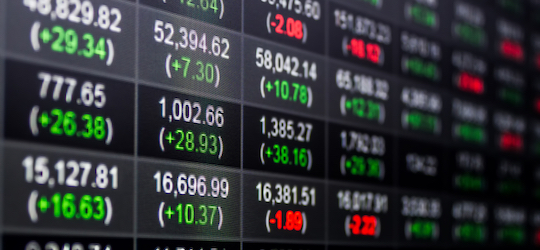Home » Posts tagged 'daily reckoning' (Page 4)
Tag Archives: daily reckoning
Rickards: It’ll Get Worse it Before It Gets Better

Rickards: It’ll Get Worse it Before It Gets Better
We’re well into the coronavirus pandemic at this point. As of this writing, there are 360,765 reported infections and 15,491 deaths worldwide.
Over the next few days, you may be certain that those numbers will be significantly higher.
That’s how pandemics work. The cases and fatalities don’t grow in a linear fashion; they grow exponentially.
It’s widely acknowledged that this pandemic will get much worse before it gets better. There’s no doubt about that.
It didn’t take long for the coronavirus crisis to turn into an economic and financial crisis.
The Worst Collapse Since the Great Depression
The U.S. is falling into the worst economic collapse since the Great Depression in 1929. This will be worse than the dot-com collapse of 2000–01 and worse than the Great Recession and global financial crisis of 2008–09.
Don’t be surprised to see second-quarter GDP drop by 10% or more and for the unemployment rate to race past 10% on its way to 15% or higher.
The questions for economists are whether the lost output will be permanent or temporary and whether U.S. growth will return to trend or settle on a new path that is below the pre-virus trend.
Some lost expenditure may just be a timing difference. If I plan to buy a new car this month and decide not to buy it until August, that’s just a timing difference; the sale is not permanently lost.
But if I don’t go out for dinner tonight and then do go out a month from now, I’m not going to order two dinners. The skipped dinner is a permanent loss.
Unfortunately, 70% of the U.S. economy is based on consumption and the majority of that consists of services rather than goods. This suggests that much of the coronavirus impact will consist of permanent losses, not timing differences.
…click on the above link to read the rest of the article…
Helicopter Money Is No Panacea

Helicopter Money Is No Panacea
In recent decades, the Fed has engaged in a series of policy interventions and market manipulations that have paradoxically left it more powerful even as those interventions left a trail of crashes, collapses and calamities.
This contradiction between Fed omnipotence and Fed incompetence is coming to a head. The economy has been trapped in a prolonged period of subtrend growth. I’ve referred to it in the past as the “new depression.” And the Fed has been powerless to lift the economy out of it.
You may think of depression as a continuous decline in GDP. The standard definition of a recession is two or more consecutive quarters of declining GDP and rising unemployment. Since a depression is understood to be something worse then a recession, investors think it must mean an extra-long period of decline. But that is not the definition of depression.
The best definition ever offered came from John Maynard Keynes in his 1936 classic, The General Theory of Employment, Interest and Money. Keynes said a depression is, “a chronic condition of subnormal activity for a considerable period without any marked tendency towards recovery or towards complete collapse.”
Keynes did not refer to declining GDP; he talked about “subnormal” activity. In other words, it’s entirely possible to have growth in a depression. The problem is that the growth is below trend. It is weak growth that does not do the job of providing enough jobs or staying ahead of the national debt. That is exactly what the U.S. is experiencing today.
Long-term growth is about 3%. From 1994 to 2000, the heart of the Clinton boom, growth in the U.S. economy averaged over 4% per year.
…click on the above link to read the rest of the article…
“Last Hurrah” for Central Bankers
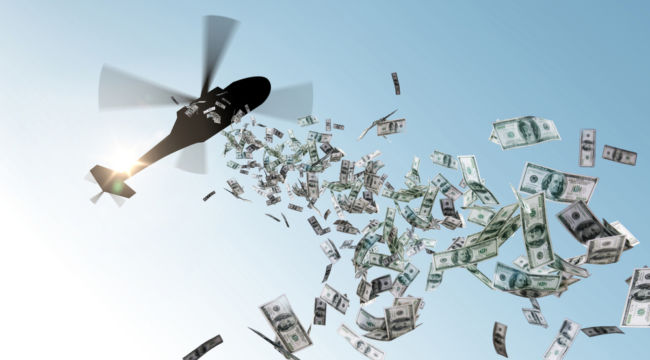
“Last Hurrah” for Central Bankers
We’ve all seen zombie movies where the good guys shoot the zombies but the zombies just keep coming because… they’re zombies!
Market observers can’t be blamed for feeling the same way about former Fed Chair Ben Bernanke.
Bernanke was Fed chair from 2006–2014 before handing over the gavel to Janet Yellen. After his term, Bernanke did not return to academia (he had been a professor at Princeton) but became affiliated with the center-left Brookings Institution in Washington, D.C.
Bernanke is proof that Washington has a strange pull on people. They come from all over, but most of them never leave. It gets more like Imperial Rome every day.
But just when we thought that Bernanke might be buried in the D.C. swamp, never to be heard from again… like a zombie, he’s baaack!
Bernanke gave a high-profile address to the American Economic Association at a meeting in San Diego on Jan. 4. In his address, Bernanke said the Fed has plenty of tools to fight a new recession.
He included quantitative easing (QE), negative interest rates and forward guidance among the tools in the toolkit. He estimates that combined, they’re equal to three percentage points of additional rate cuts. But that’s nonsense.
Here’s the actual record…
That QE2 and QE3 did not stimulate the economy at all; this has been the weakest economic expansion in U.S. history. All QE did was create asset bubbles in stocks, bonds and real estate that have yet to deflate (if we’re lucky) or crash (if we’re not).
Meanwhile, negative interest rates do not encourage people to spend as Bernanke expects. Instead, people save more to make up for what the bank is confiscating as “negative” interest. That hurts growth and pushes the Fed even further away from its inflation target.
What about “forward guidance?”
…click on the above link to read the rest of the article…
Rickards: World on Knife Edge of Debt Crisis

Rickards: World on Knife Edge of Debt Crisis
Herbert Stein, a prominent economist and adviser to presidents Richard Nixon and Gerald Ford, once remarked, “If something cannot go on forever, it will stop.”
The fact that his remark is obvious makes it no less profound. Simple denial or wishful thinking tends to dominate economic debate.
Stein’s remark is like a bucket of ice water in the face of those denying the reality of nonsustainability. Stein was testifying about international trade deficits when he made his statement, but it applies broadly.
Current global debt levels are simply not sustainable. Debt actually is sustainable if the debt is used for projects with positive returns and if the economy supporting the debt is growing faster than the debt itself.
But neither of those conditions applies today.
Debt is being incurred just to keep pace with existing requirements in the form of benefits, interest and discretionary spending.
It’s not being used for projects with long-term positive returns such as interstate highways, bridges and tunnels; 5G telecommunications; and improved educational outcomes (meaning improved student performance, not teacher pensions).
And developed economies are piling on debt faster than they are growing, so debt-to-GDP ratios are moving to levels where more debt stunts growth rather than helps.
It’s a catastrophic global debt crisis (worse than 2008) waiting to happen. What will trigger the crisis?
In a word — rates. Low interest rates facilitate unsustainable debt levels, at least in the short run. But with so much debt on the books, even modest rate increases will cause debt levels and deficits to explode as new borrowing is sought just to cover interest payments.
…click on the above link to read the rest of the article…
Major Recession Alarm Sounds

Major Recession Alarm Sounds
Red, red, in every direction we turn today… red.
The Dow Jones shed 800 scarlet points on the day.
Percentage wise, both S&P and Nasdaq took similar whalings.
The S&P lost 86 points. And the Nasdaq… 242.
And so the market paid back all of yesterday’s trade-induced gains — with heaps of interest.
Worrying economic data drifting out of China and Germany were partly accountable.
Chinese industrial production growth has slackened to 4.8% year over year — its lowest rate since 2002.
And given China’s nearly infinite data-torturing capacities, we are confident the authentic number is lower yet.
Meantime, the economic engine of Europe has slipped into reverse. The latest German data revealed second-quarter GDP contracted 0.1%.
Combine the German and Chinese tales… and you partially explain today’s frights.
But today’s primary bugaboo is not China or Germany — or China and Germany.
Today’s primary bugaboo is rather our old friend the yield curve…
A telltale portion of the yield curve inverted this morning (details below).
An inverted yield curve is a nearly perfect fortune teller of recession.
An inverted yield curve has preceded recession on seven out of seven occasions 50 years running.
Only once did it yell wolf — in the mid-1960s.
An inverted yield curve has also foretold every major stock market calamity of the past 40 years.
Why is the inverted yield curve such a menace?
As we have reckoned prior:
The yield curve is simply the difference between short- and long-term interest rates.
Long-term rates normally run higher than short-term rates. It reflects the structure of time in a healthy market…
Longer-term bond yields should rise in anticipation of higher growth… higher inflation… higher animal spirits.
Inflation eats away at money tied up in bonds… as a moth eats away at a cardigan.
Bond investors therefore demand greater compensation to hold a [longer-term] Treasury over a [short-term] Treasury.
…click on the above link to read the rest of the article…
New Multi-year Gold Rally Has Emerged

New Multi-year Gold Rally Has Emerged
The dollar price of gold has been on a roller-coaster ride for the past six years. But the past six weeks have been a turbocharged version of that. Investors should expect more of the same for reasons explained below.
The six-year story is the more important for investors and also the more frustrating. Gold staged an historic bull market rally from 1999 to 2011, going from about $250 per ounce to $1,900 per ounce, a 650% gain.
Then, gold nose-dived into a bear market from 2011 to 2015, falling to $1,050 per ounce in December 2015, a 45% crash from the peak and a 51% retracement of the 1999-2011 bull market. (Renowned investor Jim Rogers once told me that no commodity goes from a base price to the stratosphere without a 50% retracement along the way. Mission accomplished!)
During that precipitous decline after 2011, gold hit a level of $1,417 per ounce in August 2013. It was the last time gold would see a $1,400 per ounce handle until last month when gold briefly hit $1,440 per ounce on an intra-day basis. At last, the six-year trading range was broken. Better yet, gold hit $1,400 on the way up, not on the way down.
The range-bound trading from 2013 to 2019 was long and tiring for long-term gold investors. Gold had rallied to $1,380 per ounce in May 2014, $1,300 per ounce in January 2015, and $1,363 per ounce in July 2016 (a post-Brexit bounce).
But, for every rally there was a trough. Gold fell to $1,087 per ounce in August 2015 and $1,050 per ounce in December 2015. The bigger picture was that gold was trading in a range. The range was approximately $1,365 per ounce at the top and $1,050 per ounce at the bottom, with lots of ups and downs in between. Yet, nothing seemed capable of breaking gold out of that range.
…click on the above link to read the rest of the article…
Over 50? The Important Investment you NEED to Make…

Over 50? The Important Investment you NEED to Make…
What do you call an investment that has no risk, requires little — if any — money to start, is available equally to the rich and poor, is proven to improve your career prospects… can generate hundreds of thousands of dollars in savings over a lifetime?
I call it good health.
Although you might view spending on your health as a necessary expense, I’d argue it’s an investment that will pay back dividends.
Health is one of the least talked about financial topics but arguably the most important.
Without good health, it doesn’t matter how much money you have in the bank because you won’t ever be able to enjoy it if you’re always sick.
According to The Wall Street Journal, the average individual will rack up $220,000 worth of health expenses in retirement.
It should come as no surprise, but getting old is not cheap.
There are, however, proven things you can do today that will help decrease your health costs tomorrow.
For instance, one study from the Johns Hopkins Bloomberg School of Public Health found that weight loss at any age leads to cost savings. The study found it costs people more when they’re overweight – especially as they age.
According to the study:
- A 20-year-old adult who goes from obese to overweight would save an average of $17,655 in direct medical costs and productivity losses over their lifetime. If that person went from obese to a healthy weight, the savings would jump to $28,020.
- If a 40-year-old adult goes from being obese to overweight, that person potentially can save an average of $18,262. If that person improves their health from obese to a healthy weight, an average savings of $31,447 in direct medical costs and productivity losses can follow.
…click on the above link to read the rest of the article…
Prepare for Trench Warfare
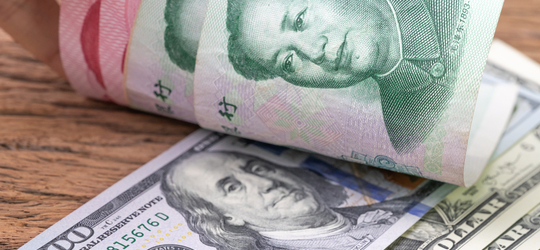
Prepare for Trench Warfare
What if China isn’t half so desperate for a deal as the president believes?
Are we in for an extended siege of economic trench warfare?
Today we explore possibilities… and their implications.
We first direct our gaze to Wall Street.
Investors came crouching from their shelters this morning… as if expecting an aftershock to the quake that drove them underground yesterday.
With Monday’s 617-point battering — piling atop last week’s losses — three months of stock market gains have vanished into the ether.
The S&P 500 endured its 15th-largest decline in history yesterday. It has shed $1.1 trillion since May 5 alone.
Markets Bounce Back
But the Earth held today. And investors cleared away some of yesterday’s wreckage.
The Dow Jones rebounded 207 points.
The S&P reclaimed 23 of the 70 points it lost yesterday. The Nasdaq gained 87.
Markets were encouraged by President Trump’s comments that he will strike a deal with China “when the time is right.”
He will have an opportunity at the G20 summit in late June. There he will meet China’s Xi Jinping, for whom his “respect and friendship is unlimited.”
But is China sweating dreadfully for a trade deal as Trump assumes?
China Braces for Escalation
China does — after all — ship some $500 billion of products to these shores each year.
It cannot afford to sit on them like a broody hen.
But you might have another guess, says the director of monetary policy at the People’s Bank of China:
As for the change in the domestic and external economic environment, China has sufficient leeway and a deep monetary policy toolkit, and so has full ability to deal with [economic] uncertainties.
But here we cite a government mouthpiece, a marionette in human form. You no more trust his word than you would trust a dog with your dinner.
…click on the above link to read the rest of the article…
Central Banks Don’t Matter

Central Banks Don’t Matter
“There is no money in monetary policy.”
Could it be true? Is there no money in monetary policy?
Yesterday we argued the Federal Reserve cannot even define money… much less measure it to any reasonable satisfaction.
Today we venture upon a heresy deeper still — that central bank “monetary” policy has no actual existence.
No money stands beneath it, behind it, beside it.
The emperor is well and truly nude.
Who then actually controls monetary policy today?
The answer may very well lie hidden in the “shadows.”
The details — the shocking details — to follow.
Monetary Policy Is Actually About Credit and Debt
First moneyman par excellence Jeff Snider — author of today’s opening quotation — rams a sharp stake through the heart of the monetary myth:
Monetary policy has been quite intentionally stripped of money. Banks evolved and there was really no easy way to define money beyond a certain point (in the ’60s), so economists just gave up trying…
Money as it relates to “monetary” policy is not really money at all. What monetary policy refers to in contemporary terms is something wholly different… When the Federal Reserve… act[s] on monetary measures, they seek not to increase the supply of money to the economy but rather the supply of credit… Monetary policy in the modern sense of the word actually has little to do with money. Instead, it is always and everywhere about credit and debt…
All money is debt-based money in today’s lunatic and preposterous world.
The dollar in your wallet you consider an asset. But only someone else’s previous debt fanned it into existence.
Technically it is a Federal Reserve note. A note is a debt instrument.
None of the foregoing will stagger or flabbergast Daily Reckoning readers.
…click on the above link to read the rest of the article…
The Fed’s Dangerous Inflation Game
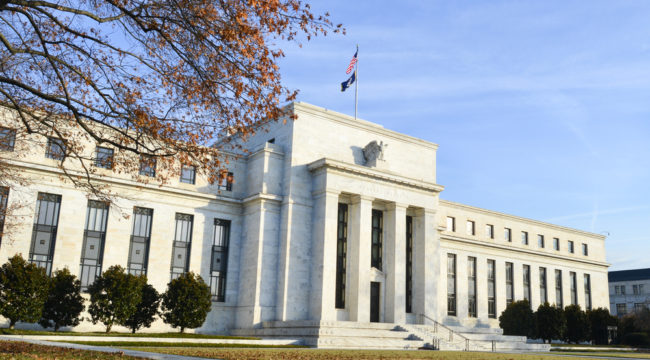
The Fed’s Dangerous Inflation Game
By now you’ve heard that the U.S. economy expanded at an annualized rate of 3.2% in the first quarter of 2019. That was reported by the Commerce Department last Friday morning.
That strong growth coming on top of 4.2% in Q2 2018 and 3.4% in Q3 2018 means that in the past twelve months, the U.S. economy has expanded at about a 3.25% annualized rate. That’s a full point higher than the average growth rate since June 2009 when the expansion began and it’s in line with the 3.22% growth rate of the average expansion since 1980.
It looks as if the “new normal” is back to the old normal of 3% or higher trend growth. Or is it?
The headline growth rate of 3.2% was certainly good news. But, the underlying data was much less encouraging. Most of the growth came from inventory accumulation and government spending (mostly on highway projects). But, business won’t keep building inventories if final demand isn’t there. That’s where the 0.8% growth in personal consumption is troubling.
The consumer didn’t show up for the party in the first quarter.
If they don’t show up soon, that inventory number will fall off a cliff. Likewise, the government spending number looks like a one-time boost; you can’t build the same highway twice. Early signs are that the second quarter is off to a weak start.
Dig deeper and you can see that core PCE (the Fed’s preferred inflation metric) cratered from 1.8% to 1.3%. That’s strong disinflation and dangerously close to outright deflation, which is the Fed’s worst nightmare.
The data just show that the Fed is as far away as ever from its 2% target. But why should it even have 2% as its target?
…click on the above link to read the rest of the article…
GDP: Fake News

GDP: Fake News
The first-quarter GDP number was released this morning. And at 3.2%, it came in far above estimates. Consensus was about 2.3%. It was also the highest Q1 GDP print since 2015.
But there’s probably less here than meets the eye.
About half the GDP gain came from a surge in inventories and a sharp reduction in the trade deficit, neither of which is sustainable. They are likely one-time boosts.
The economy has been growing since June 2009, making this the second-longest economic expansion on record. However, it has also been the weakest economic expansion on record. That has not changed under President Trump.
Even during Obama’s weak expansion we saw strong quarters including the first quarter of 2015, which was 3.2%, and the second quarter of 2015, which was almost 3%. The problem is that these strong quarters soon faded; growth in the fourth quarter of 2015 was only 0.5%, almost recession level.
Under Trump, second-quarter 2018 growth was a very impressive 4.2% annualized. Third-quarter 2018 growth was 3.4%. Trump’s tax cuts seemed to be producing exactly the kind of 3–4% sustained trend growth Trump had promised.
But then the economy put on the brakes and growth slowed to only 2.2% in the fourth quarter. It looked like the 2018 “Trump bump” in growth was over and growth was returning to the 2.2% trend that had prevailed during the Obama administration.
And despite the first quarter’s 3.2% outlier, I expect lower GDP in the quarters ahead, returning to the same punk levels we’ve seen for nine years.
For the year, economists believe GDP will expand 2.4%, down from last year’s 2.9% gain, as the boost from the 2017 tax cuts and increased government spending over the past two years start to fade.
What about the possibility of recession?
Most investors are familiar with the conventional definition of an economic recession. It’s defined as two consecutive quarters of declining GDP combined with rising unemployment and a few other technical factors.
…click on the above link to read the rest of the article…
Dollar Dominance Under Multiple, Converging Threats

Dollar Dominance Under Multiple, Converging Threats
For years, currency analysts have looked for signs of an international monetary “reset” that would diminish the dollar’s role as the leading reserve currency and replace it with a substitute agreed upon at some Bretton Woods-style monetary conference.
That push has been accelerated by Washington’s use of the dollar as a weapon of financial warfare, including the application of sanctions. The U.S. uses the dollar strategically to reward friends and punish enemies.
The use of the dollar as a weapon is not limited to trade wars and currency wars, although the dollar is used tactically in those disputes. The dollar is much more powerful than that.
The dollar can be used for regime change by creating hyperinflation, bank runs and domestic dissent in countries targeted by the U.S. The U.S. can depose the governments of its adversaries, or at least blunt their policies without firing a shot.
But for every action, there is an equal and opposite reaction.
As the U.S. wields the dollar weapon more frequently, the rest of the world works harder to shun the dollar completely.
I’ve been warning for years about efforts of nations like Russia and China to escape what they call “dollar hegemony” and create a new financial system that does not depend on the dollar and helps them get out from under dollar-based economic sanctions.
These efforts are only increasing.
Russia has sold off almost all of its dollar-denominated U.S. Treasury securities and has reduced its dollar asset position to almost zero. It has been amassing massive quantities of gold, and has increased the gold portion of its official reserves to over 20%. Russia has almost 2,000 tonnes of gold, having more than tripled its gold reserves in the past 10 years. It has actually acquired enough gold to surpass China on the list of major holders of gold as official reserves.
…click on the above link to read the rest of the article…
The Real Problem With Modern Monetary Theory

The Real Problem With Modern Monetary Theory
MMT supporters will point to 2008 and say, “Just look at QE. In 2008, the Federal Reserve Balance sheet was $800 billion. But as a result of QE1, QE2, and QE3, that number went to $4.5 trillion. And the world didn’t end. To the contrary, the stock market went on a huge bull run.We did not have an economic crash. And again, inflation was muted.”
Fed chairman Jay Powell has criticized MMT, for example. But its advocates say Powell and other Fed officials hoist themselves on their own petard. That’s because they are the ones who actually proved that MMT works. They point to the fact that the Fed printed close to $4 trillion and nothing bad happened. So it should go ahead and print another $4 trillion.
This is one of the great ironies of the debate. The Fed criticizes MMT, but it was its very own money creation after 2008 that MMT advocates point to as proof that it works.
Their only quibble is that the benefit of all that money creation went to rich investors, the major banks and corporations. The rich simply got richer. MMT advocates say it will simply redirect the money towards the poor, students, everyday Americans, people who need healthcare and childcare. It would basically be QE for the people, instead of the rich.
And it will go into the real economy, where it will boost productivity and finally give us significant growth.
When I first encountered these arguments, I knew they weren’t right. Both my gut feeling and my more rigorous approach to my own theory of money told me MMT was wrong. But I must admit, their arguments were more difficult to answer than I expected. I had a tough time uncovering the logical flaws.
…click on the above link to read the rest of the article…
Exposing the Myth of MMT
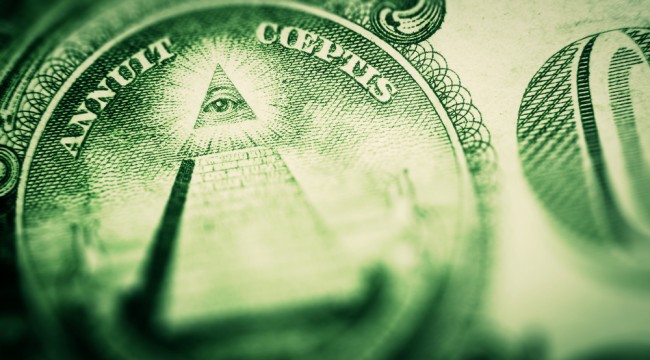
Exposing the Myth of MMT
Yesterday I discussed modern monetary theory (MMT) and how it’s become very popular in Democratic circles.
That’s because it allows for much greater government spending without having to raise everyone’s taxes. And everyday citizens could get behind it because it promises to fund lots of programs without seeing their taxes raised.
What’s not to like?
If MMT were just a fringe idea with a few fringe followers, I wouldn’t waste my time or your time on it. But it’s coming your way, so it is important to understand it.
If you missed yesterday’s reckoning, go here for a refresher.
The people who are thinking about MMT, who understand it at least in some superficial way, are the people who are driving the policy debate or running for president.
Many mainstream economists and money managers have attacked MMT, including Fed Chairman Jay Powell, Larry Summers, Paul Krugman, Kenneth Rogoff, Larry Fink, Jeff Gundlach, Jamie Dimon and Ray Dalio.
But much of their criticism is unjustified (see below for more). I’m an opponent of MMT — but for different reasons. As far as I know, I’m the only analyst who’s raised the objections I list below.
Today, I’m going to show you what I believe to be the real problem with MMT.
Again, it’s easy to see why so many politicians on the Democratic side would be such big supporters of MMT.
Some or all of them have come out in support of the following programs:
Free college tuition, student loan forgiveness, Medicare for all, free child care, universal basic income (UBI) and a Green New Deal. Some support them all.
Needless to say, that’s going to cost a lot of money. Just consider the Green New Deal alone.
…click on the above link to read the rest of the article…


